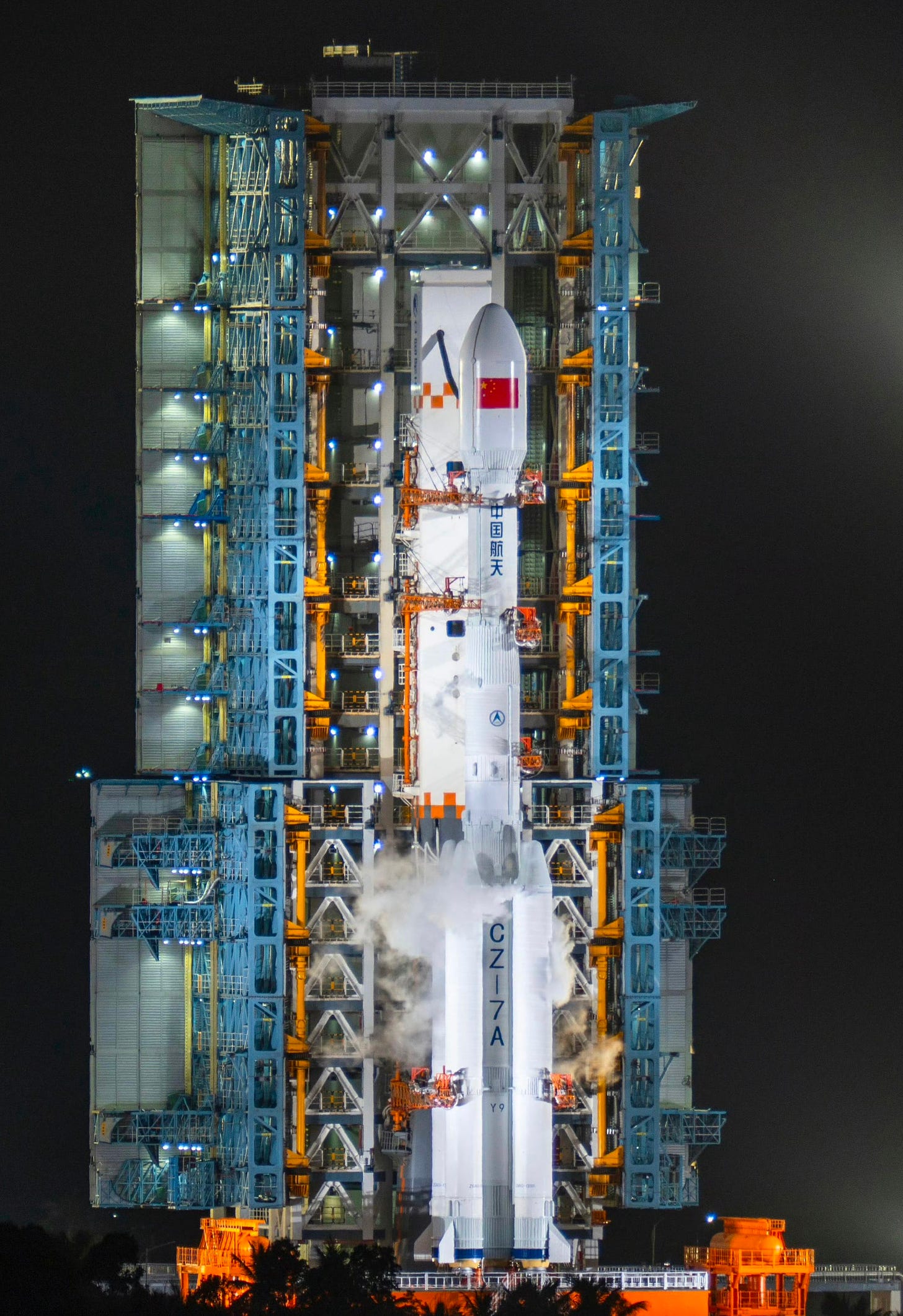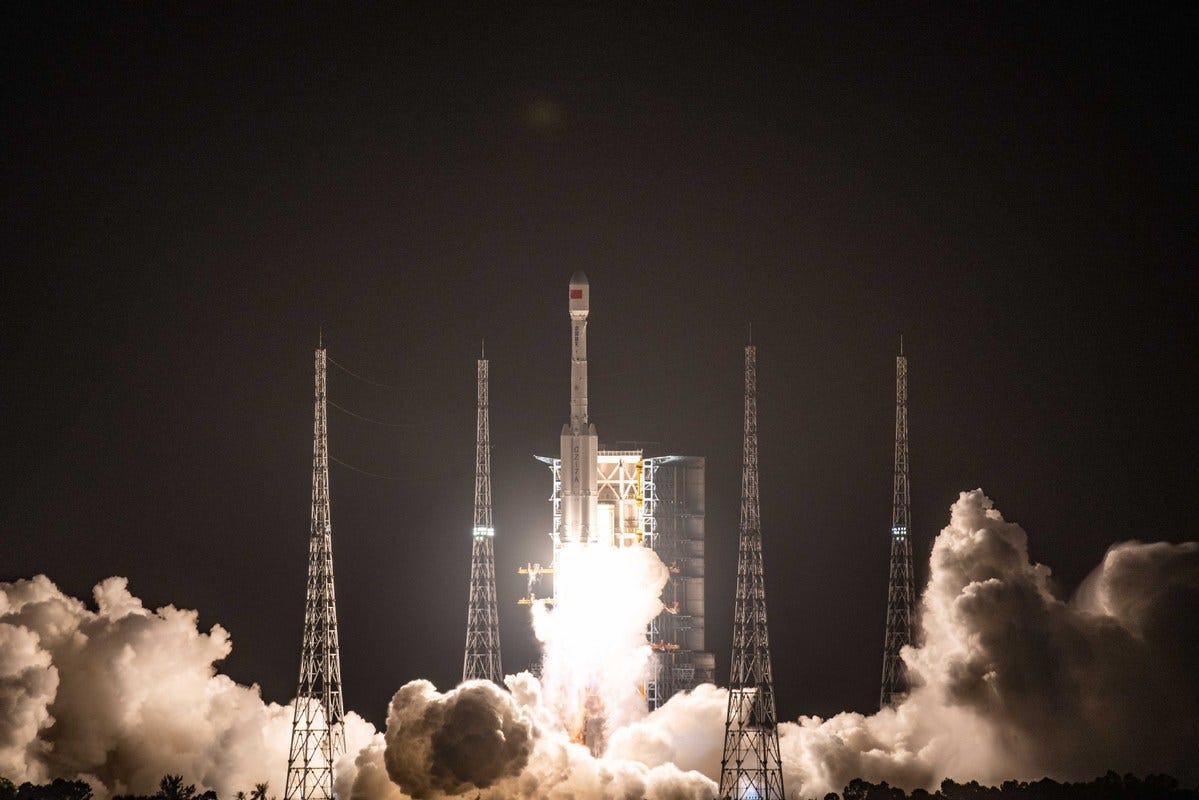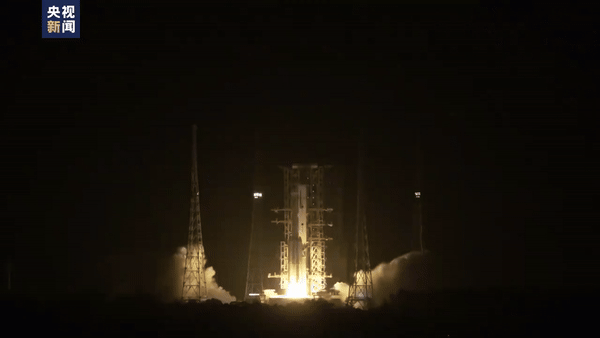To be secret, or not to be secret? [Long March 7A Y9]
Another Long March 7A has launched from Wenchang carrying a communications satellite.
On August 22nd, the second Long March 7A of 2024 took to the skies from LC-201 at the Wenchang Space Launch Site, located on China’s southernmost province of Hainan. Liftoff occurred at 20:25 pm China Standard Time, or 12:25 pm Universal Coordinated Time.
Onboard the Long March 7A for this launch was the Zhongxing-4A satellite, called ChinaSat-4A by English language China-based news outlets.
ChinaSat-4A is known to have been developed by the China Academy of Space Technology as a “communications and broadcast satellite”. The spacecraft will reportedly be used to provide data, radio, voice, and television transmission services.
Unlike ChinaSat-3A, which flew on the previous Long March 7A, details about what hardware is onboard the satellite were not shared. Over the following weeks, ChinaSat-4A is expected to raise its orbit to enter geostationary orbit, from its transfer orbit.
Also like the previous flight, teams working on the satellite and launch vehicle were keen to highlight a smoother and more effective process for testing, transportation, and integration. Efforts to speed up production and testing have evidently paid off as this was the shortest gap between launches of the Long March 7A, being just 54 days.
Despite being denoted as Y9, this was the eighth launch of the Long March 7A. Rumors of a Y7 mission in December are persisting. (Chinese companies, state-owned and private, use Y followed by a number to serialize launch mission numbering, similar to NASA with STS).
The Long March 7A Y9 launch was China’s thirty-seventh launch of the year, as one hundred launches are expected to occur this year. Seventy of those launches are expected to come from state-owned enterprises, with thirty from privately owned commercial launch companies. To achieve that goal, China would need to launch every 2.07 days.
As mentioned before, this was the eighth launch of a Long March 7A, and the sixteenth launch of a Long March 7 series vehicle. For the overall Long March series this was the 532nd launch.
A question about this launch has however gone unanswered, why the new paint job? This paint job was first spotted during the rollout and has gone unexplained by the China Academy of Launch Vehicle Technology and the China Aerospace Science and Technology Corporation. The leading theory about the change is due to improvements in launch vehicle tracking technology no longer needing the various reference points the paint provided.
What is the Long March 7A?
This section is for those less familiar with China's Long March series of launch vehicles.
The Long March 7A is a three-stage launch vehicle burning burning rocket-grade kerosene and liquid oxygen in its first two stages, as well as liquid hydrogen and liquid oxygen in the third-stage. It is manufactured by the China Academy of Launch Vehicle Technology.
The Long March 7A is believed to be able to carry up to 7,000 kilograms to a geostationary transfer orbit, or 5,000 kilograms to a trans-lunar trajectory.

The first-stage is powered by two YF-100 engines generating 245 tons of thrust burning rocket-grade kerosene and liquid oxygen. This first stage also has four boosters each powered by a YF-100 engine generating 122 tons of thrust burning rocket-grade kerosene and liquid oxygen. The total combined thrust of the boosters and first-stage is believed to be 733 tons.
The second stage is powered by four YF-115 engines producing 72 tons of thrust by burning rocket-grade fuel and liquid oxygen. The Long March 7A's third stage is powered by two YF-75 engines that generate 17 tons of thrust while burning liquid hydrogen and liquid oxygen.
On the launchpad, the Long March 7A is reported to be 60.1 meters tall, with a first and second-stage diameter of 3.35 meters. The vehicle’s third-stage has a diameter of 3 meters. Each of the four boosters are 2.25 meters in diameter. Fully fuelled the launch vehicle weighs a believed 573,000 kilograms.






